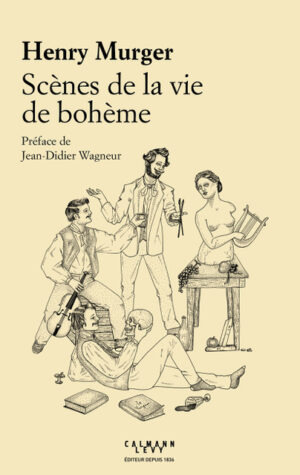
Sitting in a smoky café in the Latin Quarter, a group of young artists get drunk to forget the misery of the moment. This image is part of the collective imagination, but who has read Murger’s novel these days?
Yet these slices of life, published in serial form and adapted for the stage before being published as a collection in 1851 by Calmann-Lévy, were a resounding success on their release.
His characters have inspired many artists, from Puccini to Kaurismäki and Aznavour.
In these playlets, Henry Murger recounts his own artistic and sentimental adventures, as well as those of his friends. With his boisterous, mocking pen, he paints a portrait of a new generation forced to hunt down the penny.
Scènes de la vie de bohème marks a turning point in the history of literature: an ironic testament to Romanticism, it heralds the realism that would revolutionize the second half of the 19th century.
